Over on Twitter I recently had a brief conversation with Travis Roeder and Cameron Soran about new Baylor offensive coordinator Larry Fedora’s fondness for power run schemes. I think this is the tweet that kickstarted the convo about his power run game.
Baylor has been uniquely power run oriented since their rise under Art Briles. Smashmouth spread schemes in general are all about combining the hard-hitting punch of the power run scheme and then the multiplier effects of tempo, spacing, and speed on the perimeter. RPOs and play-action are often the bridge between the old spread world and the power run game and they are rarely more devastating than with power’s guard-pulling actions.
Since power has defined much of Baylor’s approach for the last 10 years, and will probably continue to do so under the new management, I thought I’d give a little history on the different iterations.
Art Briles’ power run game
I mention this quite a lot in my book…
Art Briles really hammered the extreme stresses for defenses trying to check big, mauling players in the box while also trying to cover sub 11.00 100m track stars running screens, hitches, and adjustable vertical routes from wide splits. The Baylor wideouts used to refer to the offense as “vertical or not” because Briles’ deep choice routes made up such a significant chunk of the playbook.
The deep choice routes were designed to get whichever track star wideout was facing a DB that couldn’t run with him into an opportunity to go vertical on them in a 1-on-1 matchup and just run to open grass where the Baylor quarterback would lead them. They had a ton of varieties of power run game and could just pair the power run sequence with the route combination that created maximal formational and personnel stress on an opponent.
For instance, Baylor came back from a 58-37 deficit against TCU in 2014 because they realized on their next drive after throwing the pick-6 that made it 58-37 that the Frogs couldn’t figure out how to fit their D-gap power run scheme. Once they figured that out?
Four play, 45-yard touchdown drive. 58-44
Five play, 92-yard touchdown drive. 58-51
Five play, 91-yard touchdown drive, 58-58. Here were the last two plays in that game-tying drive:
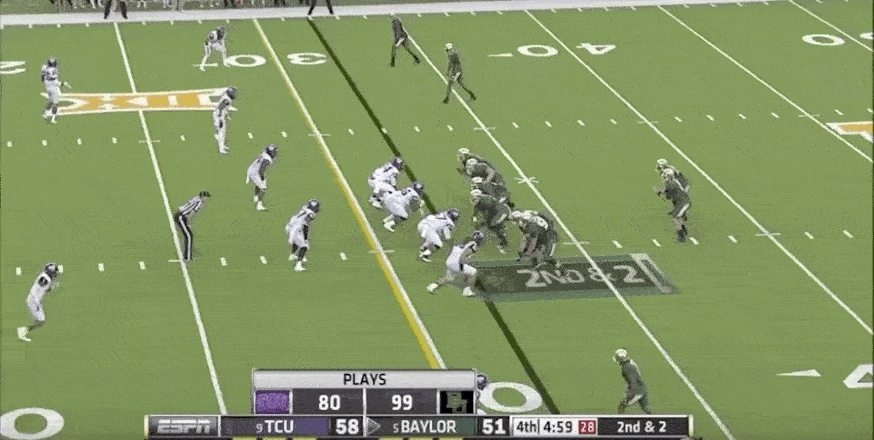
They ran it four more times on the final, game-winning field goal drive.
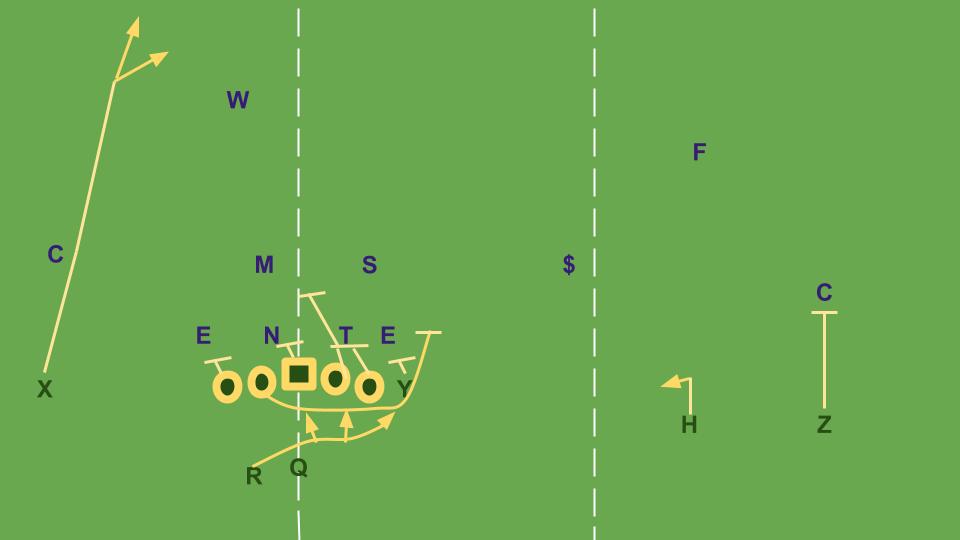
The struggle for TCU was that there was a double team that needed dealing with, there was an extra gap created by lining up the tight end on the line of scrimmage, and then there was a moving gap created by pulling the guard. But unlike Power-O or A-gap power, the Bears didn’t pull the guard behind the double team but outside of the tight end.
So there are five interior gaps, one of which is moving, two edge gaps, and a double team. And of course the biggest challenge of the Briles offense is that on top of that, Baylor is holding the defensive backs extra wide and deep with the RPOs. The Frogs couldn’t defend that wide edge alley where the guard was pulling without yielding either gaping cutback lanes or leaving defensive backs 1-on-1 outside. The extra wide splits made the alley really big and hard to defend and when the Bears pulled a guard to lead through it? Too much. So the Bears scored a ton of points very quickly and won 61-58.
Gary Patterson mentioned the scheme in his post-game presser, furious that his defense couldn’t figure out how to fit it properly in the moment. Baylor’s tempo and the way they CONSTANTLY took deep shots on opponents had a way of psychologically unnerving and undoing defenders.
Of course Briles was eventually given the boot, well before anyone had really worked out how to defend his offense, because of his part in institutional failures at Baylor. Moving on to the next era…
Matt Rhule’s “revenant” offense
When Matt Rhule was first hired by Baylor I noted that his Temple offense included a very effective anti-spread version of the power run game. I called this approach the “revenant offense” since that movie includes a famous scene of Leonardo DiCaprio being brutally mauled by a Grizzly bear.
Here’s the run scheme:
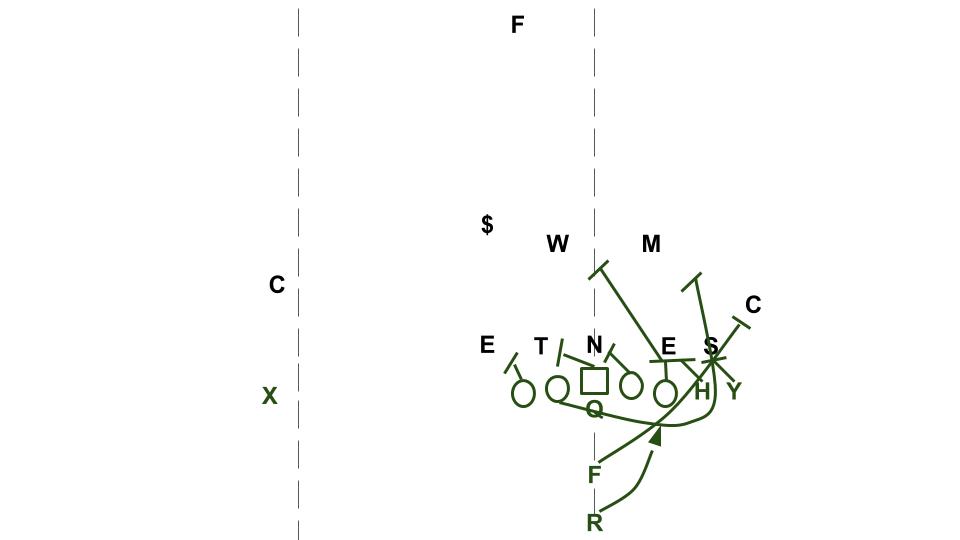
It’s actually kinda similar to Art Briles’ D-gap power scheme in some sense. But instead of using RPOs and vertical deep shots, Rhule would get an extra tight end AND fullback on the field to create additional gaps and pull defenders who had no business trying to stop power into the run fit. This D-gap power scheme would have the fullback lead and kick out the edge player, who was often a hapless cornerback.
The Bears used this scheme some in 2017 and 2018, notably while playing Jalen Hurd at running back, and then developed some different versions that were extremely useful in 2019.
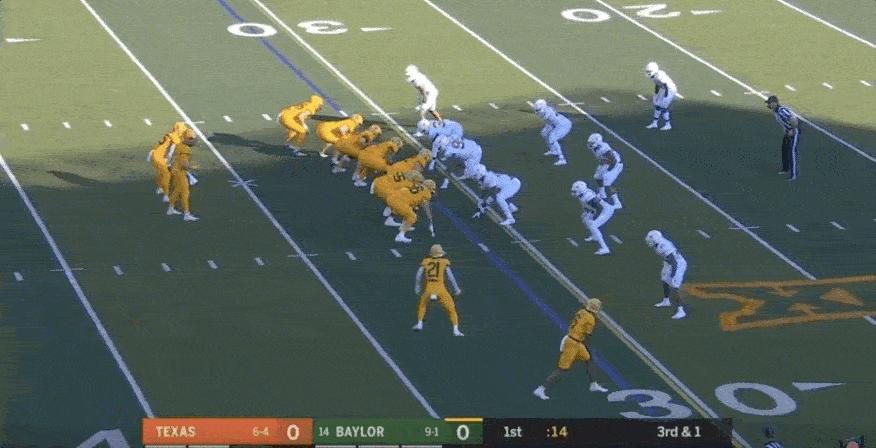
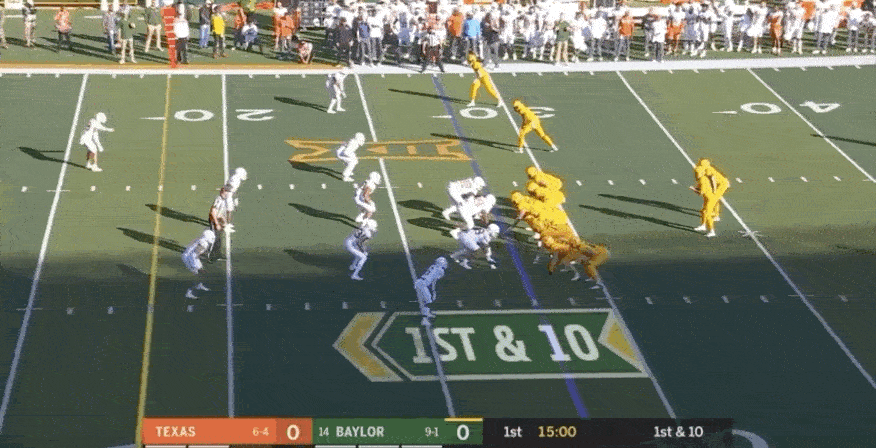
These are both variations on the same idea, D-gap power with a kick-out blocker and a lead blocker working off the tight end outside. The first one uses the running back to kick-out for the quarterback, the second one holds the backside with an RPO while pulling the guard to kick-out and the tackle to lead.
It’s like a marriage between Rhule’s love of using formations to bring diminutive defensive backs into positions where they have to take on mauling fullbacks and linemen on gap schemes and then shotgun alignments and RPOs.
Obviously Texas didn’t even know how to line up against this.
Now Rhule is off to the NFL to scheme up how to run over cornerbacks from Joe Brady’s more RPO-intensive offense. Speaking of Brady…
And now, Larry Fedora
The Larry Fedora offense at North Carolina was often “a million ways to run power from 11 personnel.”
They ran…
-Straight power with the tight end lined up as an H-back so he could kick out while the backside guard lead.
-GT counter-read with the backside guard and tackle pulling and the quarterback reading the backside end.
-D-gap power like Art Briles ran above and also GT counter to the D-gap off the tight end.
-Power-read from multiple formations with no one kicking out the edge player but the quarterback reading him for cues on whether to hand off on the sweep or to keep the ball and run the power himself.
And they ran it all from 11 personnel with RPOs like the bubble screen and glance route. They also ran downhill schemes like split zone, tight zone, and Y-iso like Briles did and most every other smashmouth spread offense does.
This is basically a tempered version of the Art Briles offense, with tighter splits, a little more variety to the playbook, and less specialization. UNC didn’t recruit strictly track star receivers since they had more variety in the offense, although Fedora’s final offensive front was similar to Baylor’s in size.
What could be interesting in 2020 and beyond is the extent to which LSU influences the Baylor offense given that some of their staff are now in Waco. The Tigers quietly also incorporated a power run game to their spread approach but they used a very different concept.
Here’s classic power from an 11 personnel, smashmouth spread offense, not the D-gap version:
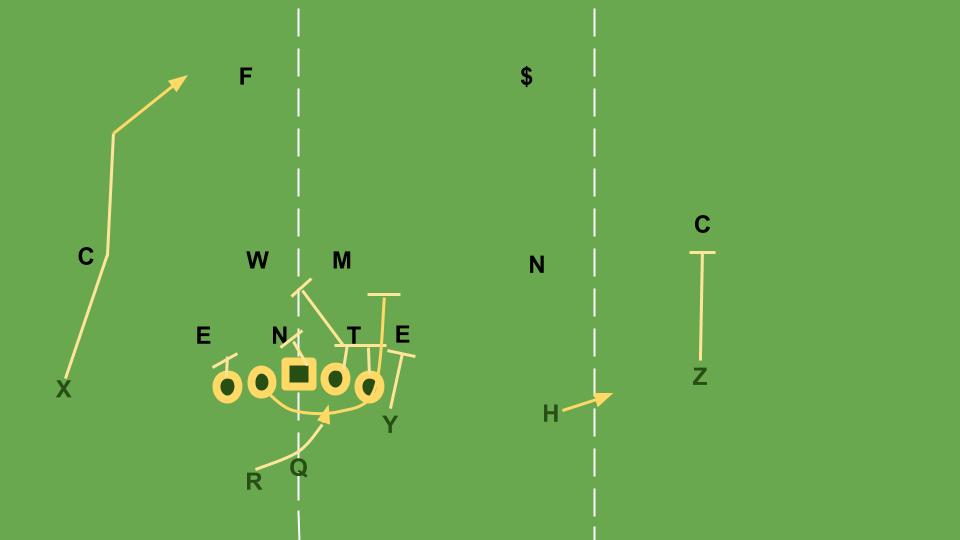
Here’s the GT counter version made ultra-popular by Lincoln Riley’s Sooners:
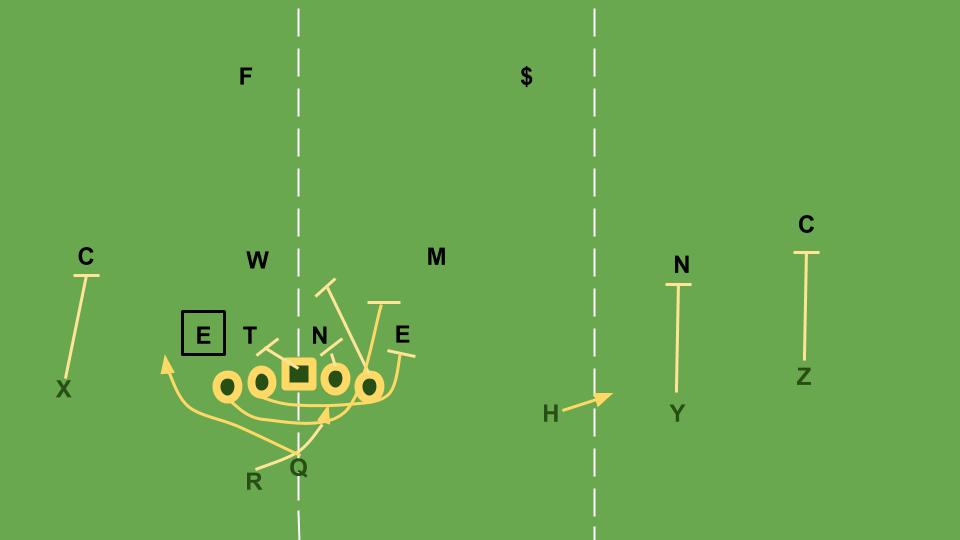
Here was LSU’s favorite way to run power:
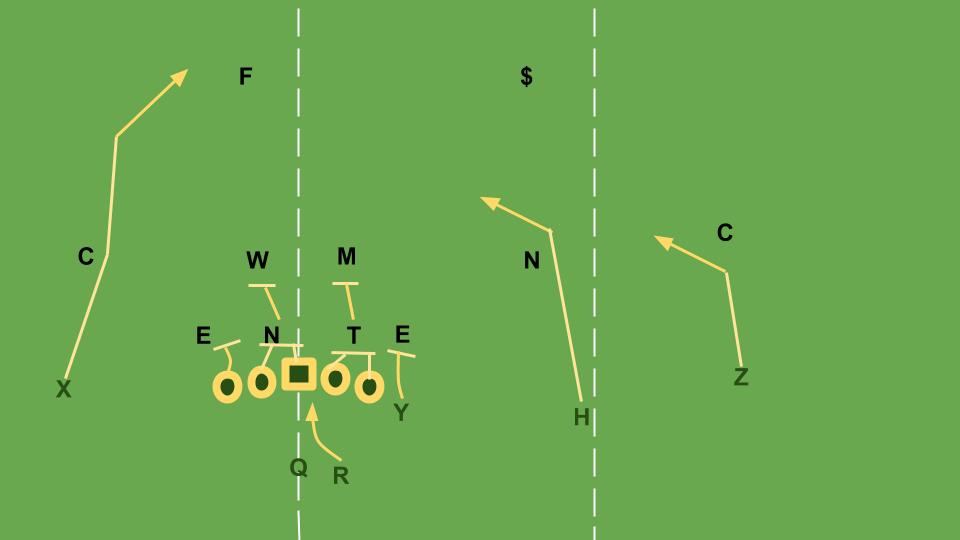
It’s very, very difficult to notice the differences between this scheme and the “tight” versions of inside zone that work downhill hard and fast. The difference is in the footwork of the offensive line, the LT and TE step inside to help create angles and tracks to kick those ends outside and everyone else is stepping to their double team rather than making a zone step.
This is “duo” which is a blocking scheme designed to create double teams across the front and just drive defenders off the ball while the running back picks his destination based on how the middle linebacker tries to fit the scheme. Some call it “no puller power” since it creates a crease between a double team and kick-out block.
Normally you’d run this play from 12 personnel or even 13 personnel, and sometimes the Tigers would run it from bunch sets with their big receivers lined up “snug” to the line so they can help. At other times they’d run it from normal 11 personnel sets and use RPOs to allow Joe Burrow to control the box and prevent defenders from getting too many guys up to punish the OL for being so preoccupied with getting the double teams that are the signature of this play.
It’s possible that Art Briles would run this play if he was coaching in college today, it’s all about having your line just go smash defensive linemen and knock them off the ball to create holes across the box that require defensive backs to hurry up and vacate deep passing windows. It doesn’t have many obvious benefits over tight zone, which Baylor already utilizes, but it is useful for tempo and allowing the quarterback and running back to control the game while the line just worries about moving people against their will.
At Baylor Fedora will inherit both some athletic linemen that have been drilled on power and GT-counter and then some big, run blocking tight ends so he probably won’t be particularly limited in how he runs power save for that he’ll probably focus on doing it from 11 personnel. In true smashmouth spread fashion, he’ll be sure and add lots of play-action and RPOs so that they can score early and often, much like that other guy that coached Baylor at the turn of the last decade.
